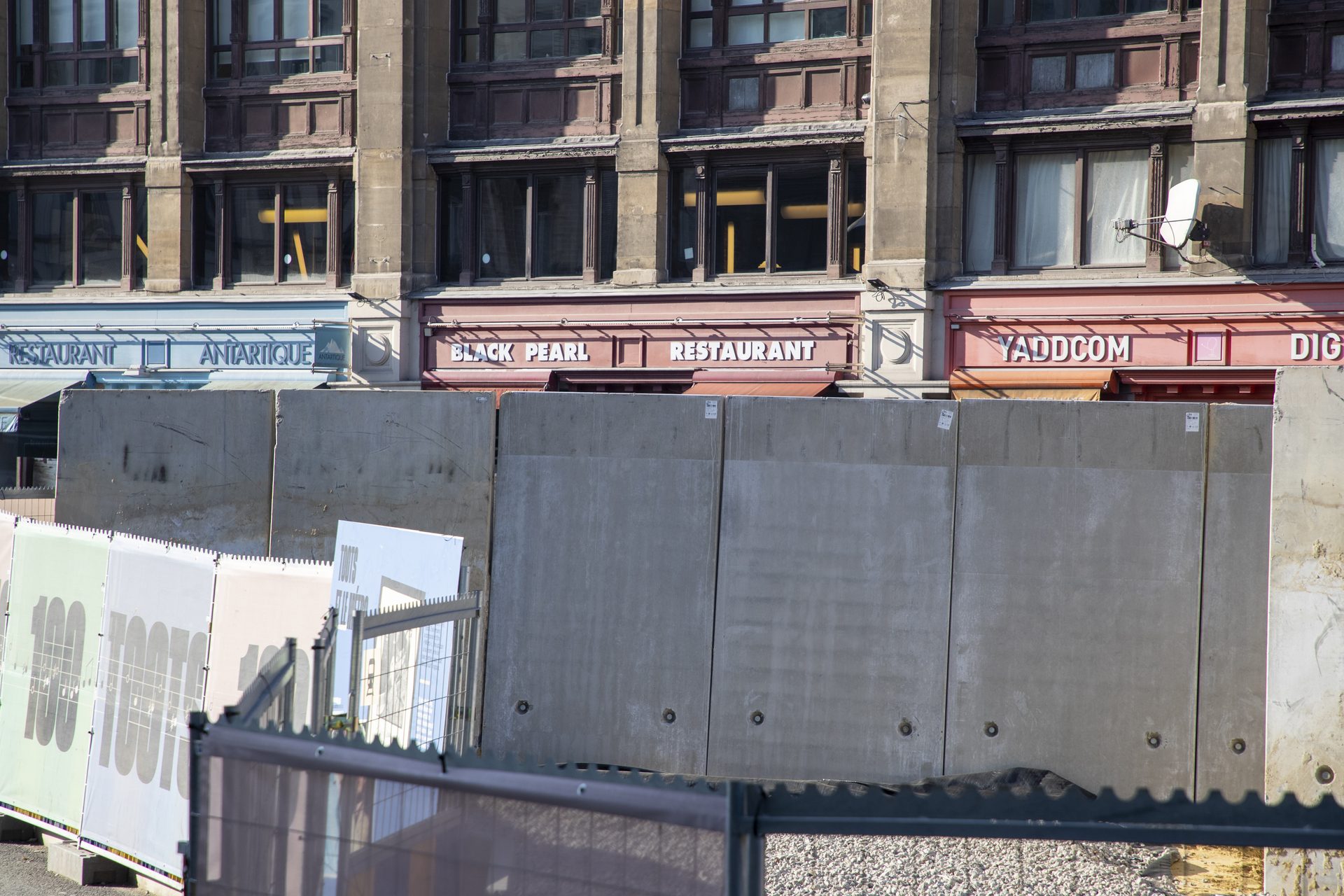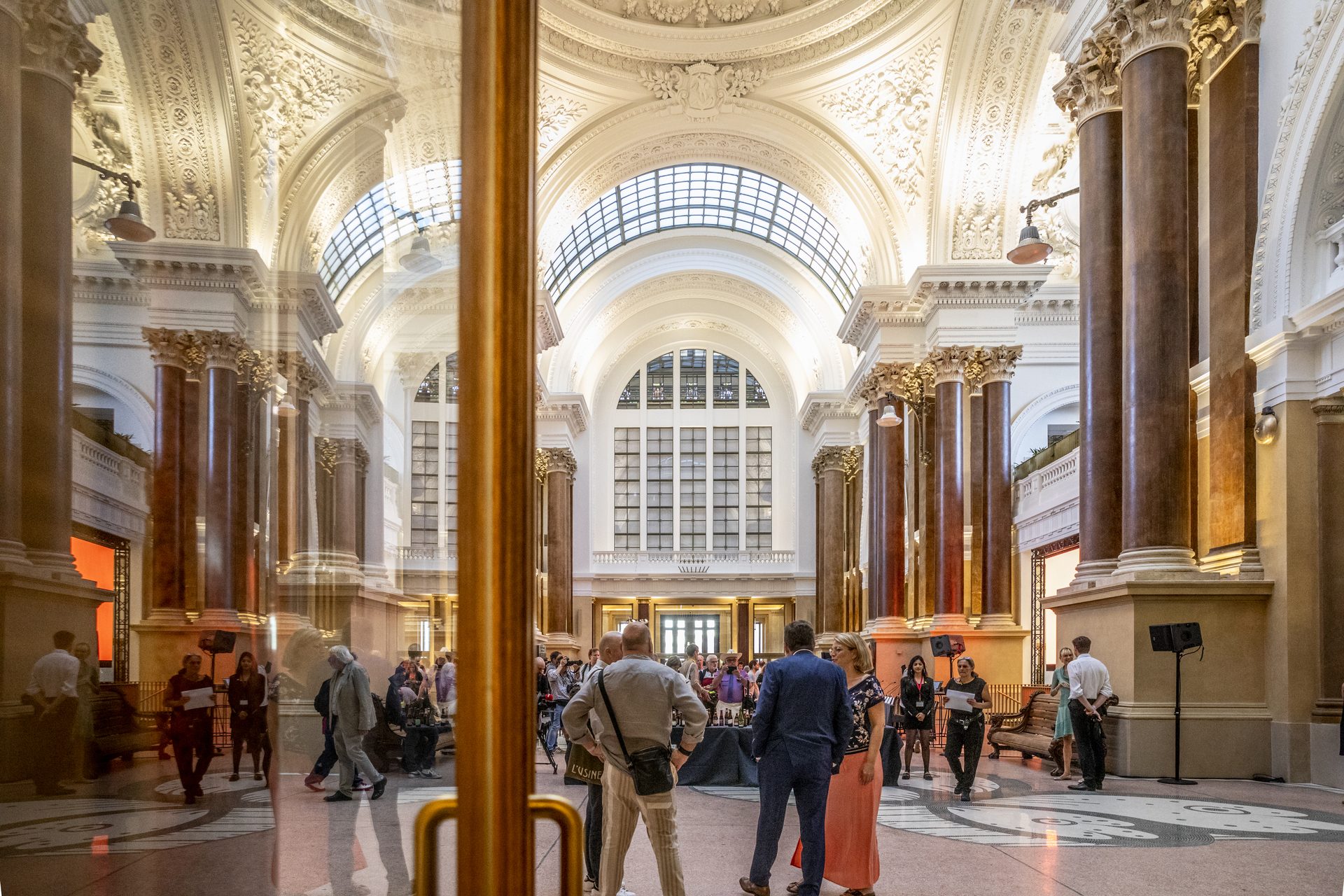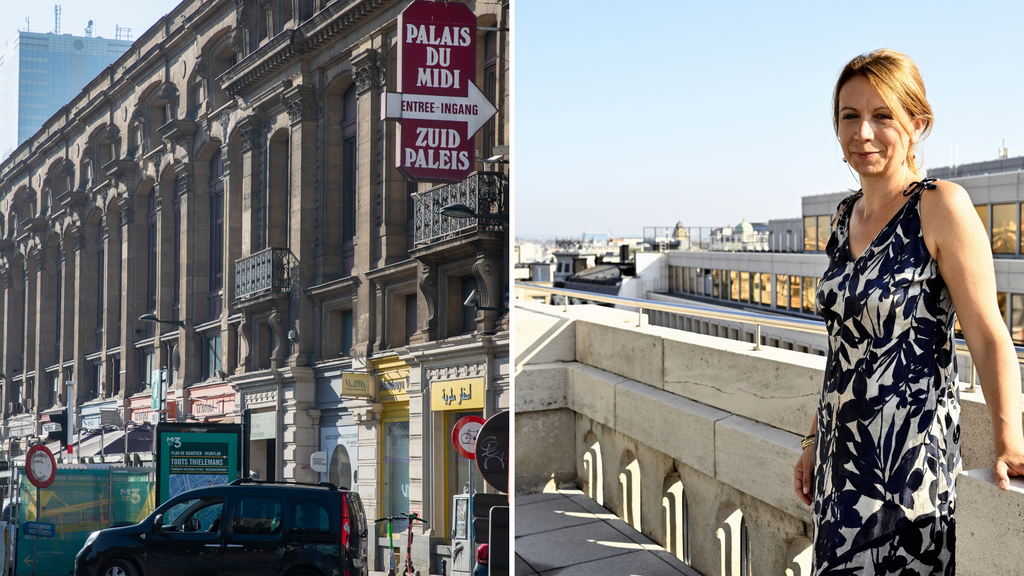The Brussels Government has often been criticised for prioritising modernisation and urban development over protecting heritage. However, State Secretary for Urban Development Ans Persoons believes a balance can, and must, be found.
The Brussels Parliament is expected to approve a so-called "fast track" decree on Friday that will speed up the planning permission procedure to dismantle the inside of the Palais du Midi (the facades will remain). The law would put an end to an almost two-year halt on the Metro Line 3 between Saint-Gilles and Schaerbeek, resulting in a never-ending construction site near Brussels-Midi railway station.
"The construction site has been idle for two years now, which has a particularly negative effect on the neighbourhood, where feelings of insecurity were already rife," Persoons told The Brussels Times.
"The situation around Brussels-Midi has been problematic for a while and many elements contribute to this, but the long-standing presence of the construction site further adds to the feeling of insecurity here. In the interest of the neighbourhood and its residents, we want to resolve this as soon as possible."
Urbicide or necessary move?
Aside from the project being heavily criticised for its major price tag – the total cost has almost doubled since initial predictions to €4.4 billion – the region was also heavily condemned for agreeing to dismantle the inside of the iconic Palais du Midi on Boulevard Lemonnier, which was deemed necessary for the works. It was dubbed an "urbicide" by local campaigners and presented as an opportunity for "urban renewal."
"The scale of such a project (the equivalent of demolishing two entire blocks in the densest districts of the Pentagon) would of course generate extremely heavy noise and dust pollution, but would also destroy the urban and social fabric of an entire neighbourhood, which would be deprived of many of its commercial, educational and sporting activities," the Urban Research and Action Workshop (ARAU) argued.
In response, Persoons stressed that nobody is a fan of the decision to dismantle the building. "We are only doing it because technically we have no other choice, as the project engineers said that the Metro 3 project cannot be finished. We decided that, if we really have to do it, we'd rather do it as quickly as possible."
Traders, as well as the sports clubs and the school that called the building their home, will get compensation and alternatives are being sought to relocate them.

The traders as well as the sports clubs and school in the building will be compensated. Credit: Belga/ Nicolas Maeterlinck
Persoons stressed that this move is necessary to complete a much-needed metro connection between the northern and southern parts of the region, especially if the urban development focus is on finding more balance in renewed public space, and prioritising cyclists and pedestrians, as well as green spaces.
"That is only possible if you get more people to make that shift from using their car to using an alternative transport mode. That's why the metro is so important, because it can transport the largest number of people. The switch to more liveable public spaces is only possible if this public transport connection is put in place."
Finding a balance
Persoons argued that a balance can and must be found between the modernisation of cities and protecting heritage, if more space is to be given back to people. She noted that the recently re-opened Bourse is a good example of this.
The largest part of the building, formerly closed off to the general public excluding on special occasions, now consists of a central space which serves as a type of public gallery and a covered street. People can enter the building on Place de la Bourse and exit in front of Grand Place.

The renovated Bourse building in Brussels. Credit: Belga / Hatim Kaghat
However, critics argued that opening up six entrances for this purpose was disrespectful of its heritage. The second, third and fourth floors, meanwhile, are taken over by the Belgian Beer World, as well as a rooftop. This was deemed an unnecessary exploitation of the space.
However, Persoons argued that, without allowing these functions into the building, the project would not have existed as it does today. "It would have been a great pity that, for heritage reasons, those changes were not made, and that people were not allowed inside the building."
"You have to find new uses for that heritage because these ensure that it's worth that renovation, which in this case costs millions. If the building is renovated for it to then not be used, then you're not going to be able to justify that cost," she concluded.

